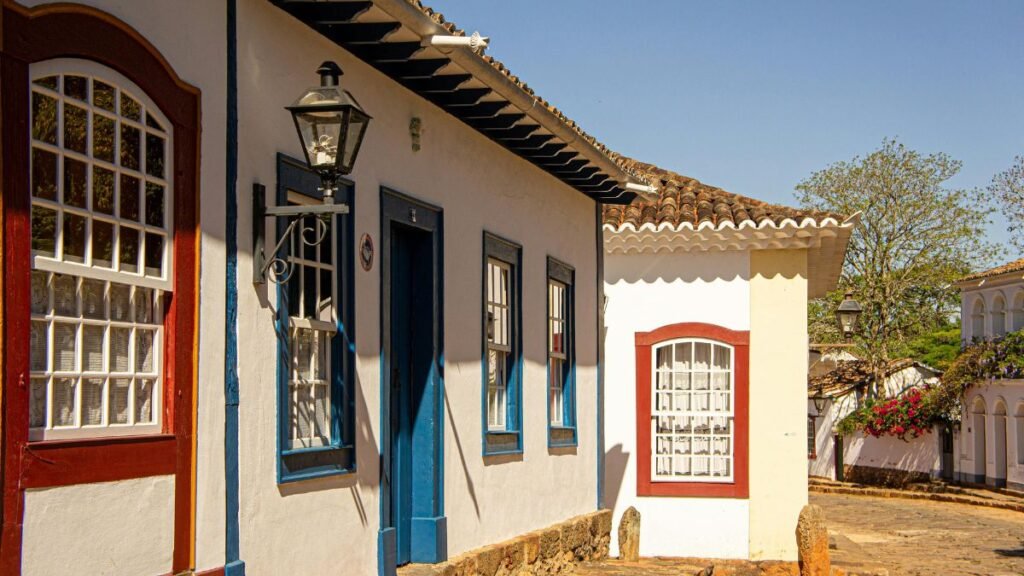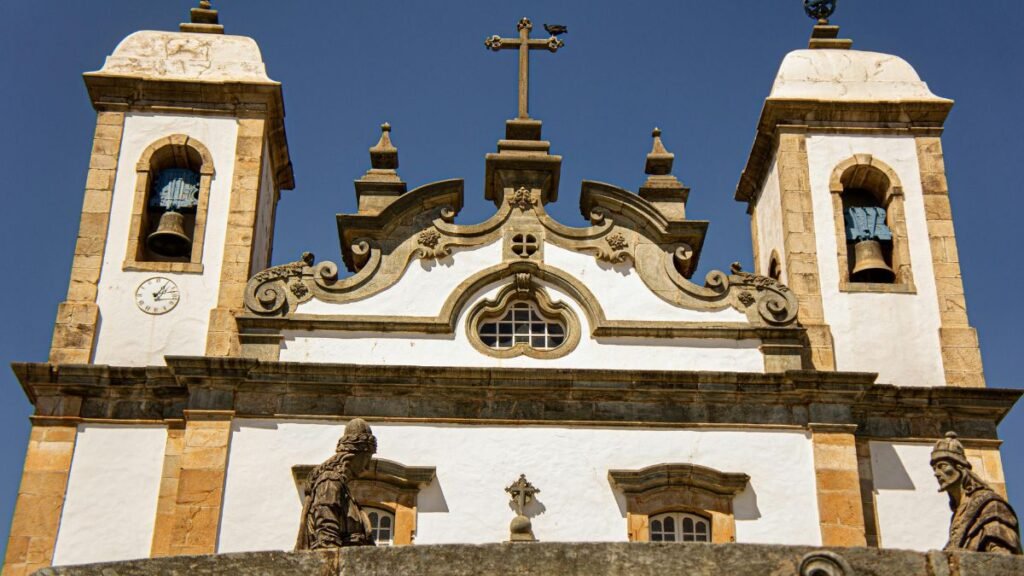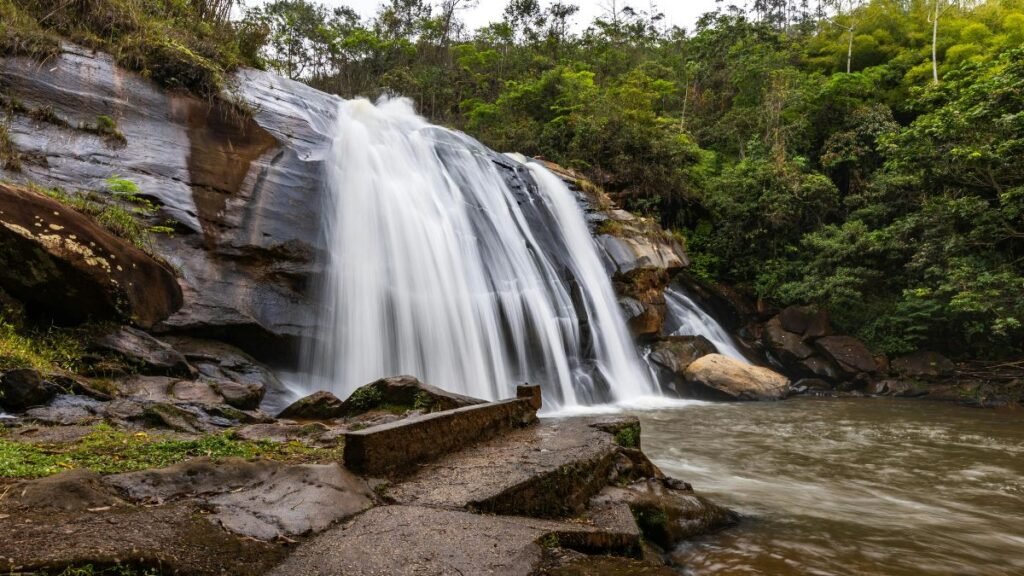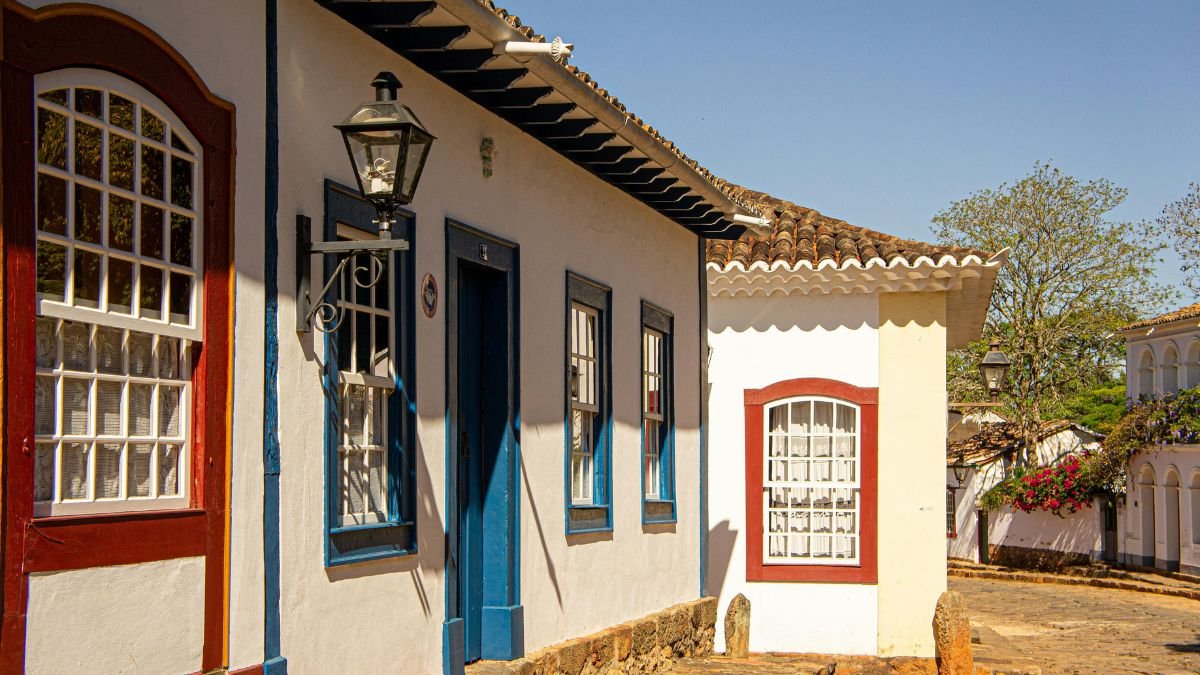Introduction
Have you ever wondered where to find the heart of authentic Brazilian culture beyond the bustling streets of Rio or São Paulo? Look no further than Minas Gerais, a land steeped in history and charm, renowned for its rich traditions and vibrant communities, making it one of the most captivating destinations in Brazil and states.
This cultural gem stands out among the 26 states and 1 federal district, offering a unique blend of colonial heritage and modern vibrancy, with its stunning landscapes and welcoming people inviting you to explore.
The state is not only famous for its beautiful towns but also for its deep-rooted customs, delicious cuisine, and a thriving arts scene that reflects the spirit of Brazil.

As the fourth-largest state by population, with over 21.2 million residents, Minas Gerais is a treasure trove of Baroque architecture, colonial history, and culinary traditions that have been preserved through generations. This state is renowned for its stunningly ornate churches and historical buildings that showcase the artistry of the Baroque period, inviting visitors to marvel at the intricate details and craftsmanship that define its architectural landscape.
The rich tapestry of Minas Gerais is further enhanced by its vibrant cultural festivals, which celebrate the state’s diverse heritage and bring together local communities in joyous expressions of music, dance, and art. From the grand facades of the churches to the quaint streets lined with colonial houses, every aspect of this region reflects a deep respect for its history and traditions, making it a fascinating destination for those who appreciate the beauty of the past and its influence on contemporary life.
Once a hub for gold and diamond mining during colonial times, it now invites travelers to explore its picturesque cities, such as Ouro Preto and Tiradentes, where every corner tells a story, and immerse themselves in its rich cultural tapestry, which is woven from the diverse influences of indigenous, African, and European heritages.
Ready to discover eight cities that showcase the essence of this remarkable region? From cobblestone streets that echo with the footsteps of history to centuries-old churches that stand as testaments to faith and artistry, each destination promises an unforgettable journey into the soul of Brazil.
These cities not only offer breathtaking views and historical significance but also a chance to indulge in Minas Gerais’ famous cuisine, featuring savory dishes like pão de queijo and feijão tropeiro, ensuring that your experience is as flavorful as it is enriching.
Key Takeaways
- Minas Gerais is a cultural gem among Brazil’s 26 states and the Federal District.
- It is the fourth-largest state in the United States by population, with over 21.2 million residents.
- The region was a major hub for gold and diamond mining during colonial times.
- It offers a unique blend of Baroque architecture, colonial history, and culinary traditions.
- Eight charming cities in Minas Gerais provide an authentic Brazilian experience.
Discover Brazil and states: Minas Gerais, A Gem in Brazil’s Diverse States
Known as the ‘General Mines,’ this state is a treasure trove of history and natural beauty. Located in the Southeast region, it borders six other states, including São Paulo, Rio de Janeiro, and Mato Grosso do Sul. Its strategic position has made it a cultural and economic hub for centuries.
With its lush landscapes, including rolling hills and expansive valleys, Minas Gerais is not only rich in minerals but also in biodiversity, offering a variety of flora and fauna that attracts nature enthusiasts.
The state’s vibrant cities, such as Ouro Preto and Tiradentes, are celebrated for their well-preserved colonial architecture and lively arts scene, which further enhances their allure as a destination for both tourists and scholars alike.
Minas Gerais is divided into 853 municipalities, with Belo Horizonte as its capital. This administrative structure supports its role as the second-largest contributor to the country‘s GDP. Its economy thrives on agriculture, mining, and manufacturing, reflecting its diverse resources.
The state is also home to UNESCO World Heritage Sites, showcasing its rich cultural legacy. From Baroque churches to colonial towns, these landmarks tell the story of its 18th-century gold rush, which produced over 1,200 tons of gold.
Compared to neighboring regions like Mato Grosso and the federal district, Minas Gerais offers a unique blend of history and modernity. Its cuisine, including pão de queijo and feijão tropeiro, is a testament to its vibrant culture. Cachaça production further highlights its artisanal traditions.
Whether you’re exploring its historic streets or savoring its culinary delights, Minas Gerais promises an unforgettable journey into the heart of Brazil’s heritage.
8 Charming Cities in Minas Gerais You Must Visit
Step into a world where history meets charm in Minas Gerais. This state is home to some of the most picturesque cities in the region, each with its own unique story and allure. From the cobblestone streets lined with colonial-era buildings to the vibrant markets filled with local crafts, every corner of Minas Gerais invites exploration. Each destination offers a unique blend of colonial architecture, cultural heritage, and vibrant life.

1. Ouro Preto
Ouro Preto, the 18th-century capital, is a UNESCO World Heritage Site renowned for its rich history and stunning architecture. Its steep cobblestone streets lead to 13 stunning churches, each a testament to the city’s Baroque heritage and artistic legacy.
Among these, the Church of São Francisco de Assis stands out with its intricate woodwork and magnificent altar, showcasing the exceptional craftsmanship that defines the region’s artistic identity. The city is also renowned for Aleijadinho’s Baroque sculptures, celebrated for their emotional depth and craftsmanship, which attract art lovers and historians alike from around the globe.
In addition to its architectural marvels, Ouro Preto hosts various cultural festivals throughout the year, including the renowned Carnival, which fills the streets with music, dance, and vibrant celebrations, further enriching its cultural tapestry. This lively atmosphere, combined with the town’s historical significance, makes it a captivating destination for anyone looking to immerse themselves in Brazil’s rich artistic and cultural heritage.
2. Tiradentes
Tiradentes is the best-preserved colonial town in the region, offering visitors a captivating journey back in time. Known for its annual film festival, which draws filmmakers and enthusiasts from various backgrounds, it showcases not only cinematic art but also the town’s vibrant culture. This festival serves as a platform for emerging talents and established artists alike, celebrating the art of storytelling through film in a picturesque setting that reflects the town’s historical charm.
The charming streets are lined with well-maintained architecture, featuring colonial houses adorned with colorful facades and intricate details, making it a perfect backdrop for photography and exploration. Each corner of the town reveals a piece of history, with museums and galleries that highlight local artisans and their crafts, offering insights into traditional techniques and contemporary expressions.
The town’s historical significance is further highlighted by its role in Brazil’s independence movement, adding depth to its already rich narrative. Additionally, the annual festivities and local traditions, such as the lively street fairs and religious processions, draw visitors who wish to experience the authentic spirit of this enchanting place.
These events not only celebrate the town’s heritage but also foster a sense of community, as locals and tourists come together to partake in the joyous atmosphere filled with music, dance, and delicious regional cuisine. The warmth and hospitality of the residents make every visit to Tiradentes a memorable experience, ensuring that it remains a cherished destination for those exploring Brazil’s cultural landscape.
3. São João del Rei
This living museum features an operational steam train that takes visitors on a scenic journey through the picturesque landscapes surrounding the town. São João del Rei is a blend of history and modernity, making it a must-visit destination. The town is renowned for its well-preserved colonial architecture, which reflects the rich heritage of the region and provides a glimpse into Brazil’s past.
In addition to the steam train, visitors can explore charming cobblestone streets, visit historic churches, and enjoy local cuisine that showcases the flavors of Minas Gerais. The vibrant cultural scene, highlighted by festivals and events throughout the year, further enriches the experience for those who come to appreciate both its historical significance and contemporary charm.
4. Diamantina
Diamantina, a UNESCO World Heritage site, is renowned for its colonial architecture, crafted from rainbow-colored stone, which showcases a stunning array of colors that reflect the natural beauty of the region. This vibrant city is also celebrated for its historical significance as the birthplace of President Juscelino Kubitschek, a key figure in Brazil’s development and modernization during the mid-20th century. The town’s well-preserved buildings, with intricate baroque details and charming facades, offer visitors a glimpse into the past and highlight the rich cultural heritage that defines this area.
Additionally, Diamantina is renowned for its vibrant music scene and traditional festivals, which draw tourists and locals alike, creating a unique atmosphere that seamlessly blends history with contemporary life.
5. Mariana
Founded in 1696, Mariana is the oldest city in Minas Gerais, steeped in a rich tapestry of history that reflects the colonial era of Brazil. As the first capital of the province, it played a pivotal role during the gold rush, which attracted countless settlers and fortune seekers.
Visitors can explore gold mine tours that delve into the depths of its mining heritage, where they can learn about the techniques used by miners and the impact of gold extraction on the region’s development. In addition to its rich mining history, the city boasts beautifully preserved Baroque architecture, with churches and buildings that tell the stories of the past. The vibrant culture is evident in local festivals and traditions, allowing visitors to experience its rich history in a truly immersive way.
6. Congonhas
Congonhas is home to the Sanctuary of Bom Jesus do Matosinhos. This remarkable site stands as a testament to the artistic and religious fervor of the Baroque period in Brazil. This open-air religious art museum features 12 statues of prophets carved from soapstone, each meticulously crafted to depict the biblical figures with intricate details and expressive features.
These statues not only showcase the exceptional talent of the artisans of the time but also reflect the deep spiritual significance that the sanctuary holds for visitors and pilgrims alike. The site is renowned for its stunning architecture and beautiful gardens, which enhance the serene atmosphere, making it a popular destination for those seeking both cultural enrichment and a moment of reflection.
7. Sabará
Sabará was a key stop on the gold route, playing a significant role in the region’s economic and cultural development during the colonial period. Its strategic location allowed it to flourish as a center for trade and commerce, attracting a diverse population of miners, merchants, and artisans who contributed to its vibrant community.
The town is particularly noted for its Chinese-inspired Chapel of Our Lady of Ó, which stands as a testament to its diverse cultural influences, showcasing a unique blend of architectural styles that reflect the rich traditions present in the area. This chapel serves not only as a religious site but also as a symbol of the artistic expression that characterized the era, drawing visitors who appreciate both its historical significance and its intricate design.
The chapel’s ornate decorations and the craftsmanship of its construction highlight the skill of the artisans of the time, making it a focal point for those interested in the rich tapestry of Sabará’s history and its ongoing legacy in Brazilian culture..
8. Belo Horizonte
The modern capital of Minas Gerais, Belo Horizonte, is renowned for the Pampulha Modern Ensemble, a UNESCO World Heritage site recognized for its groundbreaking architecture and urban planning. This remarkable complex, designed by the famous architect Oscar Niemeyer, includes a series of buildings that exemplify modernist design principles, harmoniously blending with the surrounding landscape.
The ensemble features iconic structures such as the Church of Saint Francis of Assisi, which showcases Niemeyer’s innovative use of curves and light, creating a dialogue between nature and architecture. It’s a hub of art, culture, and innovation, attracting both locals and tourists who come to appreciate its aesthetic beauty and the vibrant artistic community that thrives in the city. Additionally, the area hosts various cultural events and exhibitions, further enriching the visitor experience and solidifying Belo Horizonte’s reputation as a center for contemporary art and architecture.
| City | Key Feature |
|---|---|
| Ouro Preto | UNESCO World Heritage Site, renowned for its baroque architecture and rich history related to the gold rush. |
| Tiradentes | Rainbow-colored stone architecture reflects the region’s unique geological features and cultural diversity. |
| São João del Rei | Operational steam train, offering a nostalgic journey through picturesque landscapes and connecting to other historic towns. |
| Diamantina | The oldest city in Minas Gerais, rich in colonial history and famous for its well-preserved churches and museums. |
| Mariana | The Chapel of Our Lady of Ó is an exquisite example of colonial architecture that showcases the region’s rich artistic heritage. |
| Congonhas | Sanctuary of Bom Jesus do Matosinhos, known for its stunning soapstone sculptures created by the artist Aleijadinho. |
| Sabará | The oldest city in Minas Gerais, it is rich in colonial history and famous for its well-preserved churches and museums. |
| Belo Horizonte | Pampulha Modern Ensemble, a symbol of modernist architecture that has influenced urban development in Brazil. |
Tips for an Authentic Trip to Minas Gerais
Planning a trip to Minas Gerais? Here’s how to make it unforgettable. Start by exploring the historic Rota da Estrada Real, a remarkable route steeped in history and culture. This 1,395-mile network connects key destinations, offering a journey through time, where you can witness the breathtaking landscapes and rich heritage of the region. Along the way, you’ll encounter charming towns, each with its own unique stories and attractions, allowing you to immerse yourself in the local culture and traditions.
The best time to visit is during the dry season, from April to September. During these months, temperatures range from 68 to 82°F, making it ideal for outdoor activities such as hiking, exploring historical sites, and enjoying the vibrant local festivals. Pack light layers for comfort, as temperatures can vary throughout the day, ensuring you are prepared for both warm afternoons and cooler evenings.

Immerse yourself in local culture by attending June festivals, which are a highlight of the year in Minas Gerais. Festa Junina features vibrant bonfires that illuminate the night sky, traditional quadrilha dances that bring communities together, and a variety of delicious treats, including pamonha and canjica. It’s a vibrant celebration of regional heritage, showcasing not only the festive spirit but also the deep-rooted customs that have been passed down through generations.
Stay in historic pousadas (inns) with colonial architecture that reflects the region’s rich history. These accommodations offer a unique blend of comfort and history, often housed in beautifully restored buildings that provide a glimpse into the past. They’re perfect for travelers seeking an authentic experience, as many pousadas also serve traditional meals and share stories about the local culture and history.
Don’t miss the Inhotim Institute, the world’s largest outdoor art center, which is a true gem for art lovers. Visit during open days to explore its stunning exhibits, which feature contemporary art set against the backdrop of lush gardens and natural landscapes. It’s a must-see for art enthusiasts, as the institute not only showcases remarkable works but also hosts various cultural events and workshops that engage visitors with the art community.
For food lovers, the Serra da Canastra region is a culinary paradise. Follow the artisanal cheese routes to taste some of the finest local products, including the renowned Canastra cheese, which is celebrated for its unique flavor and exceptional quality. Pair them with a glass of cachaça, the local spirit, for a true Minas Gerais experience that tantalizes the taste buds and offers a deeper appreciation of the region’s gastronomic heritage.
Combine your trip with visits to neighboring regions like Rio Grande do Sul or Santa Catarina, both of which are known for their diverse landscapes and rich cultural attractions. These areas offer a perfect complement to your Minas Gerais adventure, allowing you to experience everything from stunning natural parks to vibrant urban centers, enhancing your overall journey through this beautiful part of Brazil.
Whether you’re exploring historic routes or savoring local flavors, these tips will help you experience Minas Gerais like a local. Start planning your journey today and make unforgettable memories in this enchanting region!
Conclusion
Minas Gerais stands out as a cultural treasure among the country’s diverse regions. Its blend of colonial charm and modern life makes it a must-visit destination. Unlike more developed states, this state proudly preserves its heritage.
Accessibility is a highlight, with Confins International Airport connecting travelers to its wonders. Consider combining your trip with visits to neighboring areas, such as Mato Grosso do Sul or Paraná, for a richer experience.
Immerse yourself in the rich history, vibrant art, and diverse traditions of Minas Gerais. Start planning your journey today and discover why it’s a gem among the country’s most captivating destinations. Learn more Irresistible Brazilian Food.
FAQ
What makes Minas Gerais unique compared to other regions?
Minas Gerais stands out for its rich history, colonial architecture, and vibrant culture. Cities like Ouro Preto and Tiradentes offer a glimpse into Brazil’s past, while the local cuisine and festivals add to its charm.
Which city in Minas Gerais is best for history enthusiasts?
Ouro Preto is a top choice for history lovers. Its well-preserved colonial buildings, churches, and museums provide a deep dive into the region’s gold rush era and cultural heritage.
Is Belo Horizonte worth visiting during a trip to Minas Gerais?
Absolutely. Belo Horizonte, the state capital, blends modernity with tradition. It’s known for its lively food scene, museums, and proximity to attractions like Inhotim, a world-renowned contemporary art museum.
What is the best time to visit Minas Gerais?
The dry season, from April to September, is ideal for this activity. The weather is pleasant, and festivals like the Tiradentes Cultural Festival in August add to the experience.
What local dishes should I try in Minas Gerais?
Don’t miss feijão tropeiro, pão de queijo, and doce de leite. These traditional dishes highlight the region’s culinary richness and are a must-try for food enthusiasts.
How can I explore Minas Gerais authentically?
Travel by car to visit smaller towns like Mariana and Sabará. Engage with locals, attend festivals, and explore off-the-beaten-path attractions for a genuine experience.
Are there any UNESCO World Heritage Sites in Minas Gerais?
Yes, Ouro Preto and Congonhas are UNESCO-listed. Both cities are celebrated for their historical significance and stunning architecture.
What outdoor activities can I enjoy in Minas Gerais?
The region offers hiking in Serra do Cipó, exploring caves in Cordisburgo, and relaxing at natural hot springs in São Thomé das Letras.




